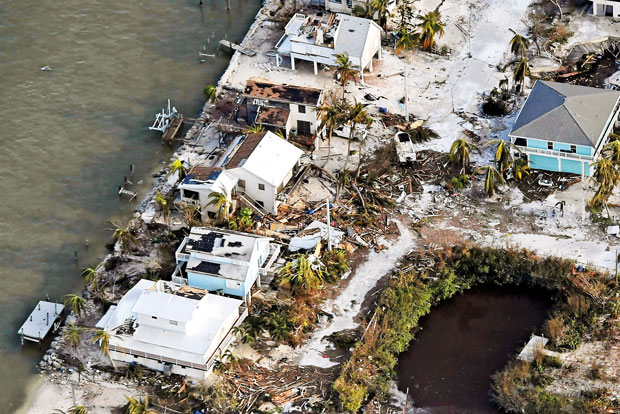13 Sep 2017 - {{hitsCtrl.values.hits}}

By Joel Achenbach, Katie Zezima, Mark Berman, William Wan (c) 2017, The Washington Post · Sep 12, 2017 -
MIAMI - As Hurricane Irma dissipated into a tropical storm on Monday, Florida’s residents emerged to streets littered with debris and downed trees while nearly two-thirds of the state was left without electricity.
The once-powerful storm left trailer homes sliced open like ripe melons, boats tossed upside down on roadways and centuries-old trees strewn across power lines. As it trailed off on Monday, Irma’s rains caused floodwaters to rise from Jacksonville, Florida, to Charleston, South Carolina, continuing to impact a massive area of the American southeast.
But it could have been much worse.
That was the grateful mantra on the lips of many on Monday, even as an estimated 12 million Floridians prepared for a dark night without air conditioning in the muggy post-storm swelter.
The lack of electricity across most of South Florida was the most pressing and crippling problem. Millions could remain in the dark for days or even weeks as utility companies struggle to navigate impassable roads and floodwaters to slowly restore power.
Waters in Jacksonville, in the state’s far northeast, sent residents scrambling to the top floors of their houses Monday morning. The St. Johns River, which cuts through the city, overflowed its banks, flooding bridges and streets.
Rescuers used boats, water scooters and even surfboards to get to residents surprised by the rising waters, said Kimberly Morgan, a spokeswoman for the Clay County emergency center. “You have to get creative in a situation like this,” she said.
Morgan said that evacuation shelters, which already held 700 people before Monday, we’re expected to fill up even more.
“We don’t think we’re going to see the end of this until Friday,” she said.
Authorities warned that it was not yet safe for evacuated residents to return to their homes in many areas of Florida, the threat of floods still looming as rivers swell with rainwater and storm surges continue to send rising ocean waters into towns, especially in northern Florida. And state officials warned that another approaching storm, Hurricane Jose, is pushing still more water toward the northern part of the state.
16 Nov 2024 1 hours ago
16 Nov 2024 1 hours ago
16 Nov 2024 3 hours ago
16 Nov 2024 3 hours ago
16 Nov 2024 4 hours ago